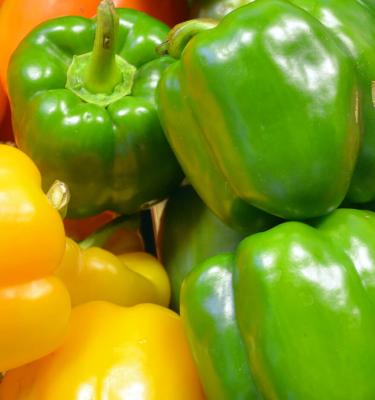

How to grow & care for Capsicum
Capsicums add crunch, colour and nutrients to many dishes including salads, casseroles, stir fries and roasts. Capsicums like to grow in conditions similar to their relatives, chillies, tomatoes and eggplants.
There are many varieties of capsicum to choose from, including ones with deep purple fruit, elongated horn-shaped fruit and even striped fruit!
Top 5 tips to growing capsicum
- Capsicums are frost-sensitive plants, grow them during your warmest months.
- Grow capsicums from seeds or seedlings
- Capsicums prefer a full sun spot
- On days over 38 degrees C protect capsicums from sunburn with a shade cloth
- Capsicums come in a great range of colours, shapes and sizes - look for heirloom varieties for something a bit different from the standard red, green and yellow.
Shopping List
- Capsicum seeds or seedlings
- Scotts Performance Naturals Organic Based Soil Improver
- Scotts Performance Naturals Tomato, Vegetable & Herb Based Fertiliser
- Garden trowel
- Pot & Scotts Performance Naturals Premium Organic Based Potting Mix - if growing in pots
Prepare
Choose a spot in your garden with full sun, that’s protected from strong winds. Capsicums prefer well-drained soil, but they will need regular watering during the growing season.
Enrich the soil with organic matter before planting by mixing through Scotts Performance Naturals Organic Based Soil Improver and Scotts Performance Naturals Tomato, Vegetable & Herb Based Fertiliser.
Growing from seeds
Sow capsicum seeds in late winter, spring or summer - using a heat mat or keeping them on a warm windowsill indoors can aid germination if your nights are cold. Seeds can be direct sown in your garden or pots if you live in the tropics or subtropics.
Capsicum seeds should be sown 5mm deep into punnets filled with Scotts Performance Naturals Premium Organic Based Potting Mix. Seeds will take 2-3 weeks to germinate, once they’ve grown to 5-7cm tall they can be transplanted into a bigger pot or your garden.
Growing from seedlings
Plant capsicum seedlings into prepared garden soil or Scotts Performance Naturals Premium Organic Based Potting Mix if growing in pots. Space plants 40-50cm apart depending on the variety.
Planting in the garden
Plant capsicum seedlings into prepared soil, in a spot with full sun. Space plants 40-60cm apart, depending on the variety. Capsicum needs a well-drained soil, but with regular irrigation throughout the fruiting season.
If the capsicum plants become top-heavy when laden with fruit or you live in a particularly windy area, bamboo or timber garden stakes can be used to support your plants.
Mulch around plants with an open organic mulch to suppress weeds and retain moisture.
Planting in pots
Plant capsicum seedlings into a pot filled with Scotts Performance Naturals Premium Organic Based Potting Mix, that has at least 50cm width by 50cm depth per plant.
Capsicum needs well-drained soil - so make sure your pot has sufficient drainage holes and is close to a water source for easy irrigation during the fruiting season.
Position your potted capsicum plants in a full sun spot, protected from strong winds. You might need to use a bamboo or timber garden stake for added support if the plants become top-heavy when laden with fruit.
.jpg)
Harvest
Capsicums should be ready to harvest 60-90 days from planting, depending on the variety. You can harvest them at any colour stage in their ripening process.
Capsicums that are ready to harvest should be firm, with glossy skin. Use sharp scissors or secateurs to cut them from the main plant.
Pests & Diseases
- Slugs and Snails can cause significant damage to young capsicum seedlings. Protect capsicum plants by setting beer traps (saucers filled with beer) amongst them or use Defender Snail & Slug Pellets.
- If aphids, whiteflies or caterpillars attack your capsicums, use Defender™ Pyrethrum Insect Spray as per the instructions to control them.
- Queensland Fruit Fly can lay their eggs into the skin of capsicum fruit. The eggs will hatch inside the fruit and the maggots will ruin the fruit causing it to drop off prematurely or be inedible when picked. Protect your crop using suitable Queensland Fruit Fly lures and baits plus install wildlife safe insect-proof netting pulled taught over the plants, once you can see the fruit has started to form.



